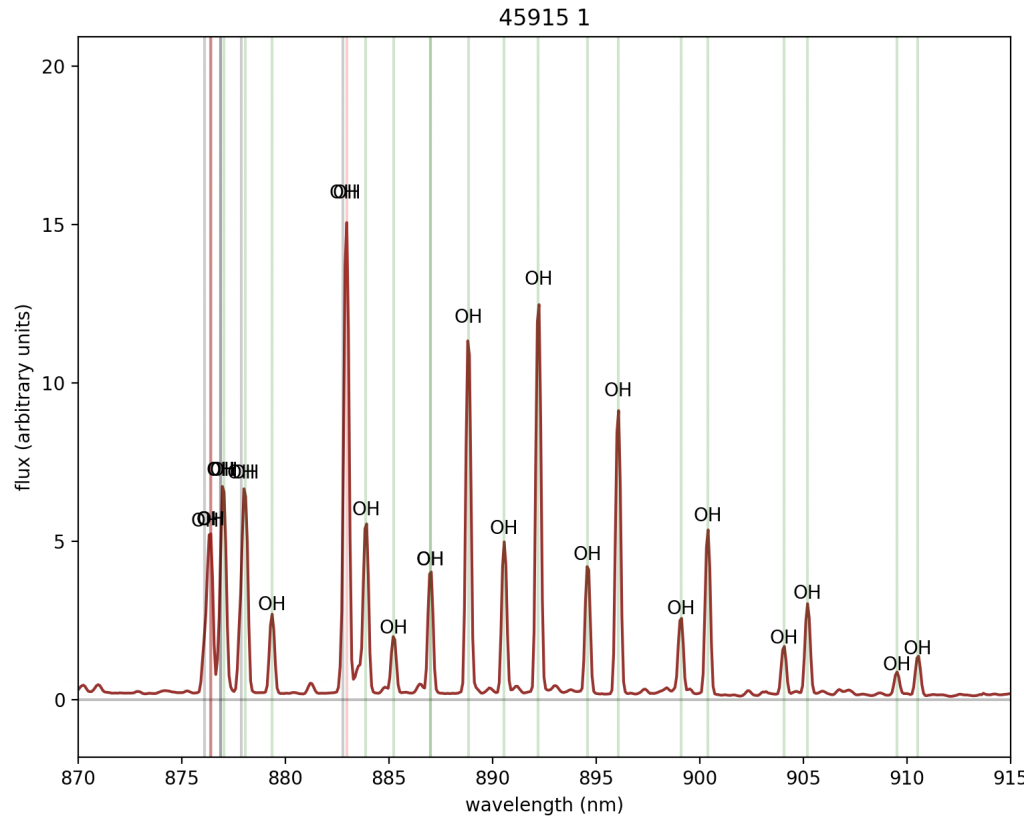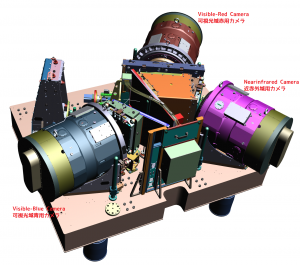As shown in the last article, the first fiber cable unit was installed on the Subaru telescope. In fact, in the same period, we have installed another instrument — a miniature telescope called “SuNSS” to study sky spectra at Mt. Maunakea.
Since night-sky emission originates from the atmosphere, any spectra observed by ground-based telescopes contain sky component as a noise. Therefore, it is necessary to remove the sky noise when we extract the target spectra from acquired images. PFS project uses a part of 2400 fibers to observe sky area itself, calculates the sky noise spectra and removes the noise from the target spectra.
Here, the point is that sky emission varies both in time and in space aspects. PFS has a huge field of view, about 1.4 square degree (7 times as large as the moon), so it is essential to calculate appropriate noise covering all fibers with a part of fibers.
To challenge this difficulty, SuNSS (the Subaru Night-Sky Spectrograph) has been developed to study sky emission observed with PFS at the site of Subaru telescope. Although the used lens is by far smaller (~4cm) than Subaru mirror (~8m), SuNSS has the same focal ratio and the same field of view as PFS to represent the condition in operation as much as possible. SuNSS is attached on the truss of Subaru telescope, and delivers the sky light to PFS fiber cable unit and then spectrograph modules. In this way, we can observe sky spectra. SuNSS has been designed and developed by Prof. Jim Gunn from Princeton University. Its fiber cable was produced our Brazilian team.

In February 2021, the next day of installation of the first fiber cable unit, SuNSS was installed on Subaru telescope. During twilight on the same day, we checked SuNSS alignment looking the sky. In other words, our fiber cable and spectrograph did observe the real sky spectra as well as spectra of stars!

Using the real sky spectra, our data pipeline team is now working harder to improve the software. With SuNSS, we will make the most of the time before PFI delivery and the time when PFI is off the telescope to study night-sky emission and develop the data pipeline software.



